Last year I decided that rather than watch the new series of Twin Peaks via whatever dubious downloads were available, I’d wait until the whole thing was released on disc. Last weekend I finally pressed “play” on the first episode, but prior to this I’d spent the past couple of months working through David Lynch’s filmography, from his earliest shorts to Inland Empire. I also watched a couple of episodes from the first two seasons of Twin Peaks (the pilot and the final episode of season two).
Watching a director’s collected works used to be a difficult thing without an obliging repertory cinema or TV channel. In the days when the BBC and Channel 4 (UK) still treated cinema as an art form we were given seasons of films by Orson Welles, François Truffaut, Ingmar Bergman, Robert Altman and many others. When was the last time a (non-Swedish) television channel showed all of Bergman’s films, I wonder? It was memories of watching an Altman season that led me to spend the summer of 2016 watching all of the director’s films from That Cold Day in the Park (1969) through to A Prairie Home Companion (2006), 33 films in all. I then followed this with a viewing of nearly all the Hitchcock films that are currently available on blu-ray. Watching a director’s oeuvre in this manner makes you notice things that seem less obvious when the same films are viewed in isolation: the recurrent use of actors becomes more notable, while themes, obsessions and directorial tics make themselves more apparent.
David Lynch shares shares with Altman and Hitchcock a compulsion for using the same actors from one film to the next, but I’d not noticed before how often dogs appear in his films. So that’s what this post examines, some of the canine moments from his feature films. Since I didn’t watch the whole of the first two seasons of Twin Peaks they’re omitted from this listing (unless you know of a dog in any of the episodes) while some of Lynch’s minor works such as the short-lived On the Air series, and one-offs such as The Cowboy and the Frenchman (1988), I either haven’t seen for years or haven’t seen at all.
The Grandmother (1970)
The Grandmother not only introduces the elderly woman/suited boy pairing that recurs later in the Twin Peaks mythos, but it also establishes the canine theme when the boy’s parents are shown mewling and barking like dogs. Whatever other qualities dogs may possess, Lynch is drawn to the disturbing and often threatening nature of the sounds they make.
Eraserhead (1977)
The potential for threat is reinforced in Eraserhead when Henry is startled by barking dogs on his way to visit Mary. The only dogs that appear before the camera are the puppies and their mother on the floor of Mary’s home.
The Elephant Man (1980)
During Frederick Treves’ walk through the grimy backstreets of Wapping he passes this waddling hound.
Dune (1984)
Pugs in space. Dune may be a mess but among its best moments are the sequences that depart from SF-film cliches. The Atreides family look more like Edwardian royalty with their furs and dogs than they do a typical group of space travellers.
Blue Velvet (1986)
Blue Velvet introduces its doggishness in one of the opening shots with a Dalmatian on a fire truck. Shortly after this there’s the terrier attacking the jet of water, and—less obviously—a large man with a tiny dog who Jeffrey passes in the street.
Wild at Heart (1990)
“My dog barks some,” says OO Spool (Jack Nance). We don’t see his dog but he suggests it might resemble Toto from The Wizard of Oz. The dog we do see later on looks rather Toto-like, although Dorothy’s dog was never shown running away with a human hand in its mouth. Critics at the time connected this moment to a similar incident in Kurosawa’s Yojimbo (1961) but I’ve never seen Lynch confirm this as a deliberate reference.
Twin Peaks: Fire Walk With Me (1992)
The feature-length prequel to the TV series contains Lynch’s most enigmatic dog moment via a musical piece by Thought Gang (David Lynch & John Neff) whose The Black Dog Runs At Night may be heard in the scene where the mysterious grandson of Mrs Tremond is hopping around a parking lot. None of this is ever explained but since the Tremonds appear to be supernatural figures from the Lodge (aka the Black Lodge) the “Black Dog” may be connected to the latter. This suggestion is amplified when Laura Palmer and her father are harangued by the One-Armed Man (another Lodge inhabitant) at a stop light, a sequence which includes brief shots and sounds of a black dog barking.
Before the appearance of the dog at the crossing, however, there’s a more mundane incident when Laura is walking to the Roadhouse and a dog crosses her path.
Lost Highway (1997)
Lost Highway‘s sole dog appearance is in this shot which looks like a nod back to the dog with the hosepipe in Blue Velvet.
The Straight Story (1999)
Laurens, Iowa in Lynchland is a place where a pack of dogs runs loose around the main street. We see these dogs a couple of times while also seeing another cheerful canine with waving humans à la Blue Velvet.
Mulholland Drive (2001)
Dogs are absent from the screen in Lynch’s two tales of Hollywood but their presence is nevertheless implied. In Mulholland Drive, Coco (Ann Miller) complains about a dog fouling the courtyard of the apartment building she looks after…
Inland Empire (2006)
While in Inland Empire, Freddie Howard (Harry Dean Stanton) has this to say:
There’s a vast network, right? An ocean of possibilities. I like dogs. I used to raise rabbits. I’ve always loved animals. Their nature. How they think. I have seen dogs reason their way out of problems. Watched them think through the trickiest situations.
Twin Peaks (2017)
At the time of writing I’ve only watched six episodes of the third series of Twin Peaks but the dog theme is there with the Chihuahua that smells something unpleasant in a South Dakota apartment, and in the amputated dog leg which the Bad Dale is inexplicably transporting. Any further dog appearances will be noted here.
Previously on { feuilleton }
• Refn’s reds
• 42 One Dream Rush
• Through the darkness of future pasts
• David Lynch window displays
• David Lynch in Paris
• Inland Empire

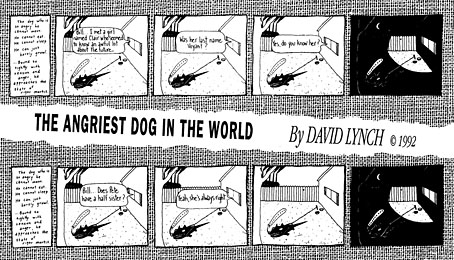
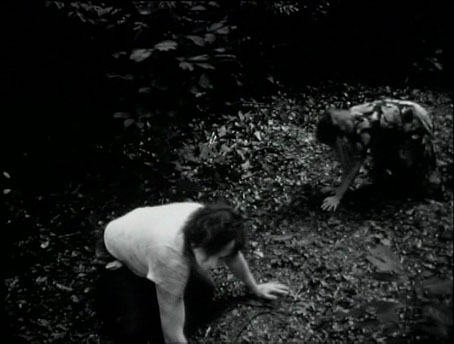
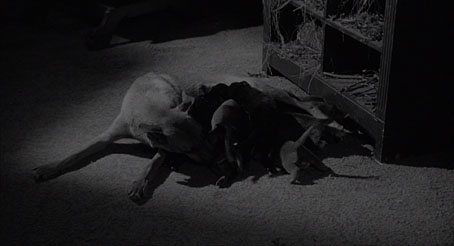


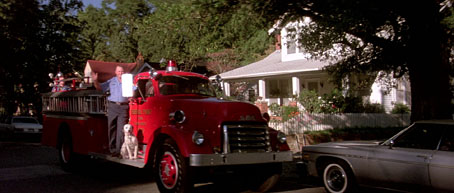
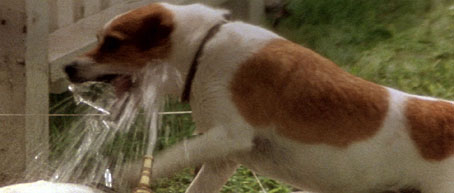
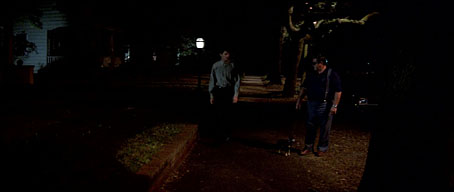
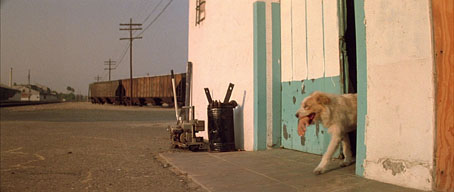
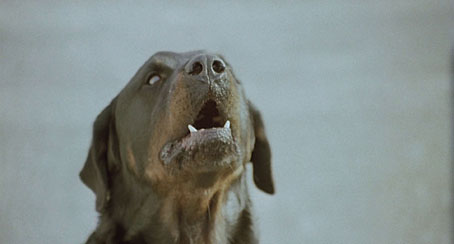
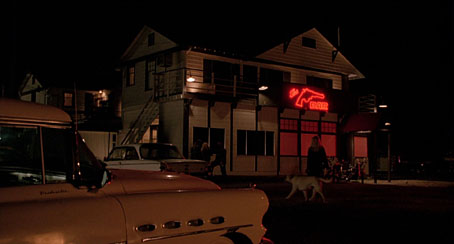
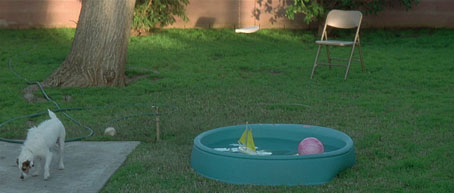
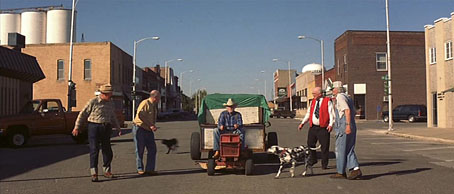
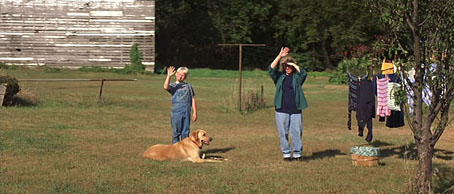
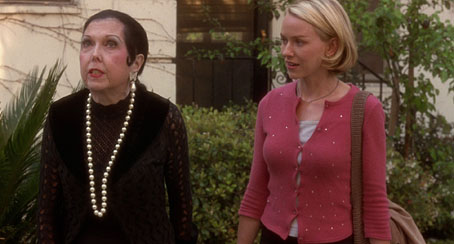
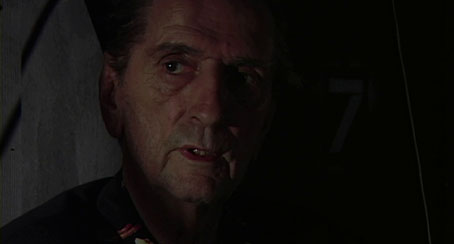
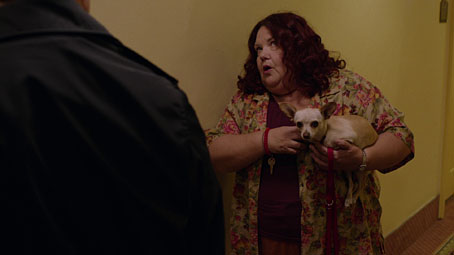
When I was reading your article, I got the image of the Log lady in the first twin peaks season, and it kind of struck me that the “Dog” lady on the last picture from the recent season is kind of a echo of the Log lady, in the way she holds the dog. The log being not so far from the dog, both phonetically and in the way they are treated by old ladies.
Re-watching Season 3 in the last couple of days, I was struck by how the door knocker on the Hastings’ residence was a dog or wolf head.
There’s also the Dead Dog Farm in series 2 where Cooper stages the botched sting on Jean Renault.
The canine theme is further emphasized in one of the Log Lady introductions which Lynch made in 1993 when the show was resyndicated to Bravo, namely the introduction to Ep.19 (where Dead Dog Farm is first mentioned):